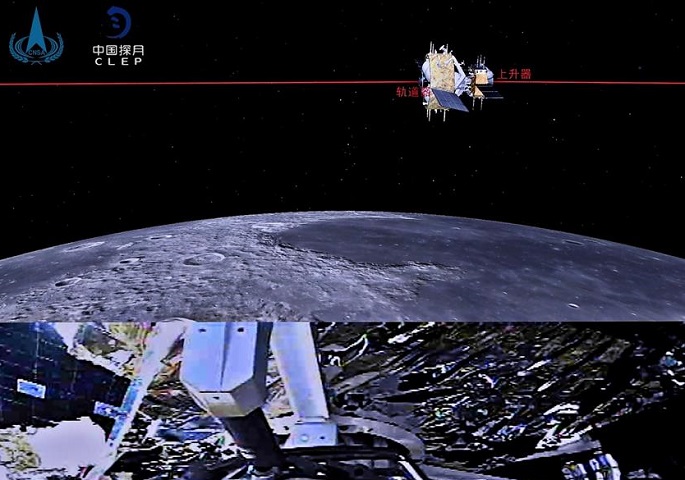Chang'e 5 begins return journey to Earth with lunar samples
Published : 13 Dec 2020, 11:06
Chinese space probe Chang'e-5 on Sunday began its return journey to Earth with about 2 kg of lunar rocks collected from the surface of the moon, reported EFE-EPA, quoting China's space agency.
The China National Space Administration (CNSA) said in a statement that the orbiter-returner module of the Chang'e-5 probe completed the second orbital maneuver and entered the moon-Earth transfer orbit.
“Four 150N engines on the orbiter-returner combination ignited when they were 230 km away from the lunar surface and shut down after 22 minutes,” the space agency said in the statement.
The combination carrying lunar samples, according to CNSA, would conduct orbital correction during its journey to Earth.
“When the time is right, the orbiter and returner will separate from one another.”
Later, the Chang'e 5 modules will to perform an orbit correction during their return trip to Earth, and the return module will eventually separate from the orbit module, according to the source.
The orbiter-returner combination completed its first orbital maneuver on Saturday.
The probe on last Tuesday successfully landed in northern Mons Rümker, an elevated area in the Oceanus Procellarum, a dark plain visible to the naked eye on the near side of the moon. The region has not been visited by astronauts or unmanned space missions so far.
The samples were collected in two different spots: on the surface of the Moon, using a robotic arm, and underground, drilling 2 meters down to obtain samples that could date from much earlier periods.
The collected material was stored in a vacuum-sealed container to ensure that it is "not affected by the external environment during the return to Earth," the CNSA said.
If completed successfully, the mission would make China the third country capable of collecting lunar samples after the United States and the former Soviet Union previously did so in the 1970s.
Chang'e-5 was launched on Nov. 24 by the Long March-5 rocket, which on July 23 successfully carried China's first mission to Mars, Tianwen-1, into space. It is expected to arrive on the Red Planet in May.
The Chang'e program (named in honor of a goddess who, according to Chinese mythology, lives on the moon) began with the launch of an orbital probe in 2007.
The Asian country made its first moon landing in 2013, and in January 2019 it managed to land the Chang'e-4 probe on its far side, where it remains a milestone never achieved before in the history of lunar exploration.
The ultimate goal of the program is a manned mission to the moon and the construction of a science base, although no date has been set for this.


